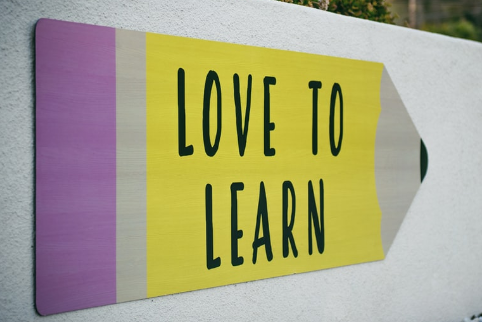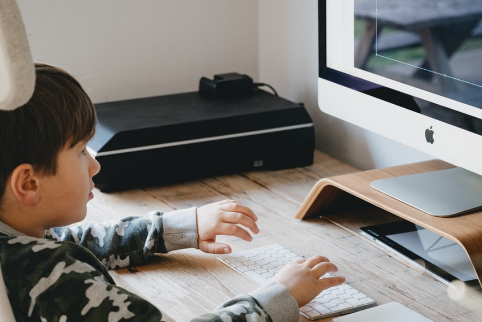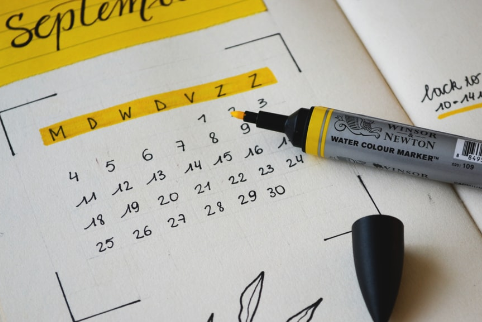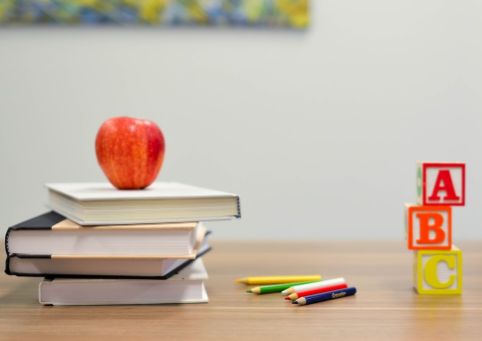
This logo isn't an ad or affiliate link. It's an organization that shares in our mission, and empowered the authors to share their insights in Byte form.
Rumie vets Bytes for compliance with our
Standards.
The organization is responsible for the completeness and reliability of the content.
Learn more
about how Rumie works with partners.
The school year is beginning, and many students are learning remotely.
What does this mean?
Remote learning can take many forms, but the main idea is that the teacher and the students are not in the same room during teaching and learning.
What Will It Look Like?
Remote learning takes two forms.
Synchronous
Asynchronous

But what do these terms mean?
Synchronous
Synchronous means that the teacher and students are meeting at the same time. They are “in sync.” This may or may not involve videoconferencing (such as with Google Meet or Zoom). Examples include:
Teacher explaining concept to the entire class.
Small groups working through problems together.
Class watching a video while commenting together in the chat.
Asynchronous
This means that the teacher and students are not working together at the same time. They are not "in sync."
Examples include:
Students use a website such as Khan Academy or Google Classroom to watch videos and complete problems.
Students read a physical or e-book.
Students use packets provided by their school to access resources and complete work.
While your child may have synchronous meetings with their teacher, they will probably also have asynchronous work.
Quiz
If my child meets with their teacher once a day live on video, and also completes work alone, what kind of remote learning is my child doing?
This kind of learning is both synchronous and asynchronous, because the your child meets with the teacher (synchronous) and completes work on their own (asynchronous).
Did you know?
How Do I Prepare?
Your child may be continuing remote learning that began in the spring, so you may already have idea of how to prepare. Trust yourself! Take some time to think about what worked, what didn’t work, and how you can adjust for the fall. But how else can you prepare? Use the Where, What, Who, When, How, and Why below.
Where
Children need:
A space to learn. If you can, dedicate a desk or table for this. If not, a clipboard can offer a flat surface for writing.
A place to sit. This should be the right size for your child. A 5-year-old in a big office chair will not be comfortable!
A quiet space. Your student will need to focus on lessons and work, so if possible, keep the room where they are learning free of extra sound. This can also be accomplished with a pair of headphones if they are meeting synchronously with their teacher.
A place with light. Whether students can use natural light or a lamp, their work space should be well-lit.

What
Students need:
A way to get their school’s resources and teaching. This may mean a laptop, tablet, or a packet provided by the school.
Log-in information and a list of programs. If your child needs a laptop or tablet, they also need the login information for any programs their school uses.
A schedule. Your child will get a schedule from their school. Posting this will help keep both your child and on on track.
Basic supplies. Such as paper, pencils, scissors, or other age-appropriate supplies.

Who
Grown-ups and kids can work together to get the learning space set up. Discuss what is needed with both older and younger students. Letting them think through what they need will help give them a sense of power.

When
If possible, prepare the school space in advance, so your child can get used to it. But if school has already started for your child, it is never too late to make changes! Try new things and see how they work.

How
This might not be the year you or your child wanted it to be. The way we deal with these challenges sets the tone for our children. If we react with frustration and anger, they will too. If we stay calm and make the best of the situation, they will follow our lead.

Why
Why do this? Because you have to! Well, that’s not a great reason. The “why” is because you want your child to have a great year. You are already showing you support your child by reading this Byte. You will do great!
Quiz
Where is a good place for my child to do their school work?
All of these are great places to work! Moving between spaces can be a great way to get re-energized when your child is feeling unfocused.
Take Action
While this isn't the year many of us expected or wanted, we have the chance to make the best of it.
What will you do first to get your child ready for remote learning?

This Byte has been authored by
Stephanie Ramsey
Consultant and Researcher